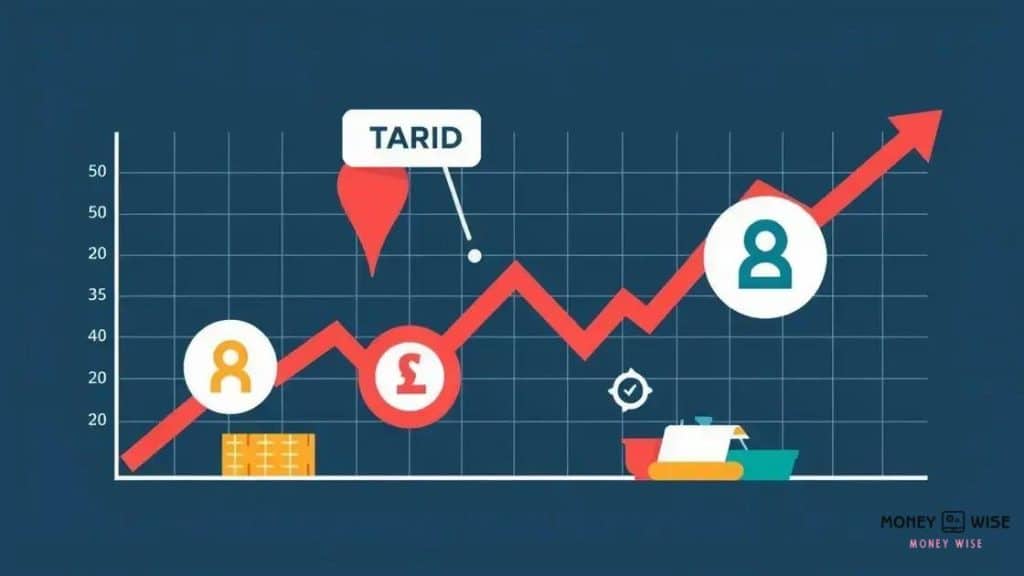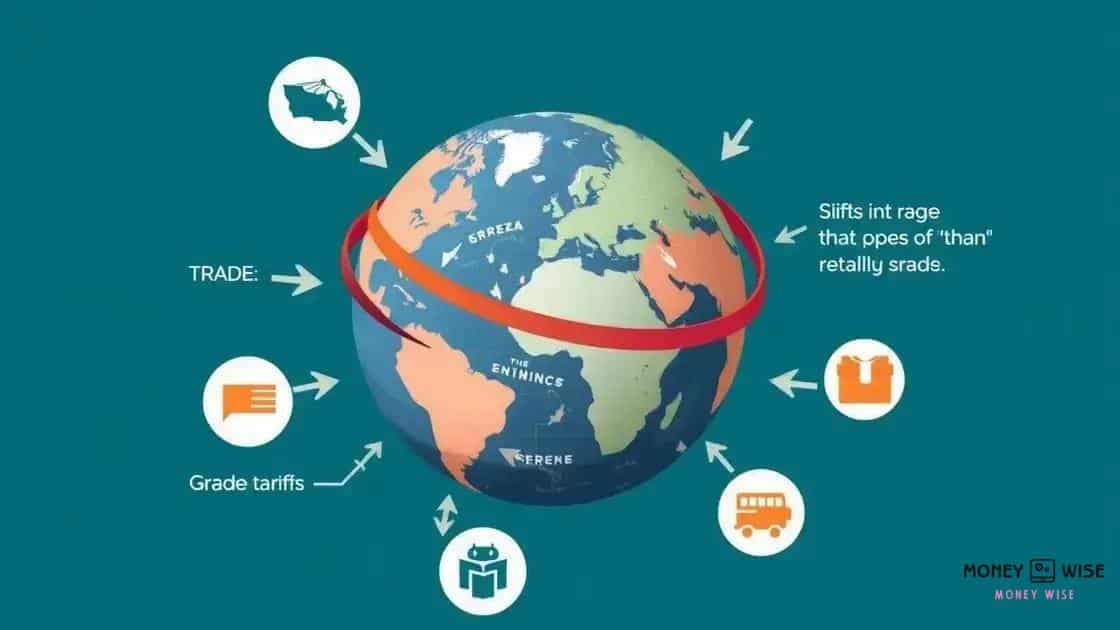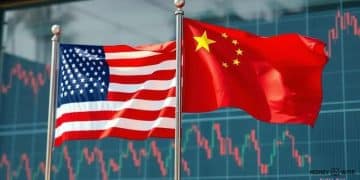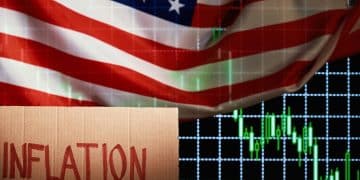Trump tariffs impact market volatility profoundly

Trump tariffs impact market volatility by raising consumer prices, altering trade relationships, and prompting businesses to adapt supply chains and strategies to maintain stability.
Trump tariffs impact market volatility in ways that many people may not realize. As these tariffs reshape trade relationships, the financial landscape shifts dramatically, influencing both investors and consumers. Curious about how this affects you? Let’s dive in.
Understanding the history of Trump tariffs
The history of Trump tariffs is crucial to understanding their impact on the economy today. When President Trump took office in 2017, he introduced tariffs as a way to protect American industries and jobs. This move aimed at reducing trade deficits and encouraging domestic production.
Key Events in Tariff Implementation
Several key events marked the path of these tariffs.
- The initial tariffs on washing machines and solar panels began in January 2018.
- Subsequent tariffs on steel and aluminum imports were imposed in March 2018.
- Escalation in trade tensions with China led to further tariffs on a wide range of goods.
Through these actions, the Trump administration signaled a strong stance on trade policy. Many believe that such tariffs significantly altered global trade dynamics.
The Reaction of Trading Partners
Various countries reacted differently to these tariffs. While some sought to negotiate new agreements, others quickly proposed counter-tariffs. For instance, countries like Canada and Mexico responded with their own tariffs on American exports, leading to trade disputes. The uncertainty created worry among businesses and investors worldwide.
Over the years, the consequences of tariffs became evident. Companies faced increased costs, which often passed on to consumers. As prices rose, public opinion began to shift regarding the effectiveness of these tariffs. In many cases, the desired results did not materialize as expected.
Understanding the complex history of Trump tariffs helps explain the current market conditions. The ripple effects continue to be felt, influencing discussions about future trade policies and economic strategies.
How tariffs affect consumer prices
Understanding how tariffs affect consumer prices is essential for anyone trying to navigate today’s economy. When tariffs are imposed on imported goods, it often leads to a domino effect on prices.
Impact on Costs
Tariffs raise the cost of imported products. As a result, businesses must choose how to respond. Many pass higher costs to consumers. This makes everyday products more expensive.
- Imported goods become pricier due to added duties.
- Domestic producers may increase prices if they perceive less competition.
- Consumers face higher prices at retail stores.
The ripple effect of these price changes can reach many sectors of the economy. For example, if tariffs are placed on steel, prices for cars and construction materials could rise. This means consumers might pay more for items they do not directly associate with tariffs.
Consumer Behavior Changes
In response to rising prices, consumers may alter their purchasing habits. They might turn to cheaper alternatives or forego certain products altogether. This shift can lead to decreased demand for more expensive items, further affecting market dynamics.
Understanding these patterns helps evaluate the broader implications of tariff policies. As prices rise, households may feel strain on their budgets, leading to potential shifts in spending habits.
In summary, the influence of tariffs on consumer prices is significant and far-reaching. Recognizing this connection helps individuals make informed decisions in a changing market.
Market reactions to tariff announcements
Market reactions to tariff announcements can be swift and significant. When new tariffs are announced, traders and investors often react immediately, adjusting their positions based on perceived risks and opportunities. The markets can experience fluctuations that reflect these reactions.
Immediate Impact on Stock Prices
Usually, the announcement of tariffs causes rapid changes in stock prices. For instance, stocks of companies that rely heavily on imported materials may drop. Conversely, businesses in domestic manufacturing might see an uptick in their stock prices.
- Investors assess the potential for increased costs and reduced profits.
- Companies in the sectors directly affected often face sharp declines.
- Positive perceptions of tariffs can lead to price increases in certain stocks.
These shifts highlight how sensitive the market is to tariff news. Traders often monitor communication from political leaders closely, as even hints about potential tariffs can trigger market movements.
Longer-Term Market Trends
Over time, markets may stabilize as businesses adjust to new tariff regimes. Companies start to develop strategies that account for higher costs. Some might find creative solutions, such as sourcing materials domestically to avoid tariffs.
As companies adapt, the initial shock of tariff announcements may fade, but the long-term impact on market conditions can be profound. Investors who understand these trends can better navigate the uncertainties created by tariffs.
Monitoring market reactions to tariff announcements is essential for smart investing. Recognizing patterns and trends can be beneficial for both businesses and consumers in a rapidly changing economy.
Long-term effects on international trade

The long-term effects of tariffs on international trade are complex and far-reaching. As countries impose tariffs, they not only change the immediate landscape of trade but also shape future economic relationships.
Shifts in Trade Patterns
Tariffs can lead to significant shifts in trade patterns over time. Countries affected by tariffs may seek new trading partners or explore alternative markets. This behavior alters global trade dynamics as nations respond to changes in pricing and availability.
- Countries might increase exports to less affected markets.
- New alliances can form as nations work together against tariffs.
- Domestic industries may attempt to boost production to replace imports.
As these shifts occur, businesses may need to adapt rapidly. They might reconsider their supply chains or even relocate production to lower-tariff regions. These adjustments can lead to long-lasting changes in how goods are produced and traded globally.
Economic Implications
The economic implications of tariffs are profound. Over time, tariffs can lead to higher prices for consumers and strain relationships between trading partners. Businesses often face difficulties in planning and forecasting due to market uncertainty.
This economic tension can escalate into trade wars, where countries continually impose new tariffs in response to each other’s actions. Such conflicts can disrupt global markets and impact economic growth worldwide.
Businesses, traders, and policymakers must navigate these changes thoughtfully. Understanding the long-term effects of tariffs on international trade can help in making informed decisions and developing strategies for the future.
Potential solutions for market stability
Finding potential solutions for market stability amid the uncertainties caused by tariffs is crucial for businesses and consumers alike. As tariff policies can create volatility, identifying effective strategies becomes essential.
Diversifying Supply Chains
One viable approach is to diversify supply chains. Businesses can reduce reliance on single sources for materials. By sourcing from multiple suppliers in different countries, companies can mitigate risks associated with tariffs.
- Increased flexibility to adapt to tariff changes.
- Access to various market prices and conditions.
- Better risk management through geographic diversification.
This strategy not only helps in stabilizing costs but also creates opportunities for businesses to explore new markets and partnerships.
Advocating for Trade Agreements
Another solution is advocating for comprehensive trade agreements. Negotiating new or updated trade deals can help alleviate the impact of tariffs. Policymakers can work on agreements that balance interests on both sides of a trade relationship.
These agreements can provide more consistency in trade and potentially reduce the need for tariffs over time. By creating a stable environment, businesses can plan more effectively and reduce uncertainties.
Engagement in constructive dialogue between countries can foster cooperation, leading to beneficial arrangements for all parties involved. Understanding the long-term vision is vital for achieving sustainable market stability.
In conclusion, pursuing diverse supply chains and advocating for balanced trade agreements provides a pathway toward market stability. When businesses and governments work together, the economy can thrive, even amidst challenges from tariff policies.
FAQ – Frequently Asked Questions about Trump Tariffs and Market Stability
What are tariffs, and how do they affect the economy?
Tariffs are taxes on imported goods that can raise prices for consumers and affect market dynamics.
How can businesses mitigate the impact of tariffs?
Businesses can mitigate the impact of tariffs by diversifying their supply chains and exploring alternative suppliers.
What is the long-term effect of tariffs on international trade?
Tariffs can disrupt global trade patterns, leading countries to seek new trade partners and alliances.
How do tariffs influence consumer prices?
Tariffs typically lead to higher prices for imported goods, which can result in increased costs for consumers.
What strategies can help promote market stability amidst tariffs?
Advocating for fair trade agreements and diversifying supply chains are effective strategies for promoting market stability.





